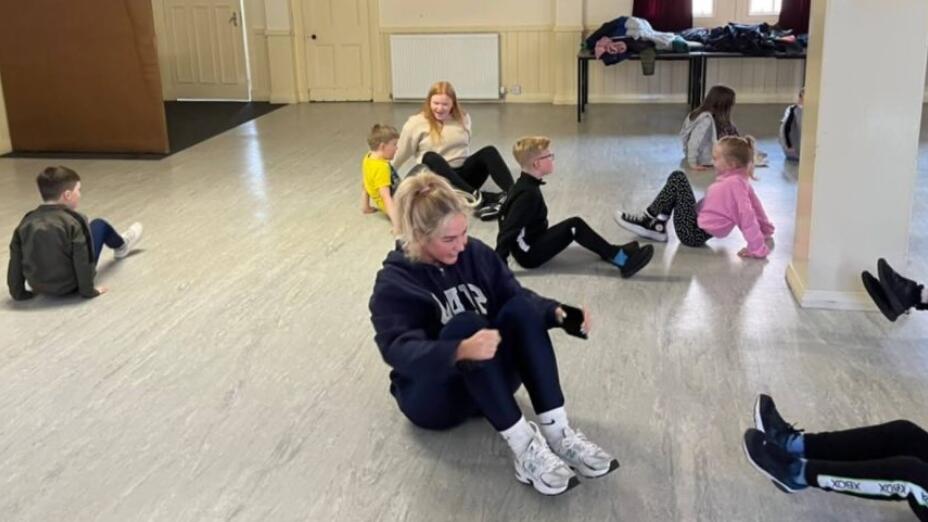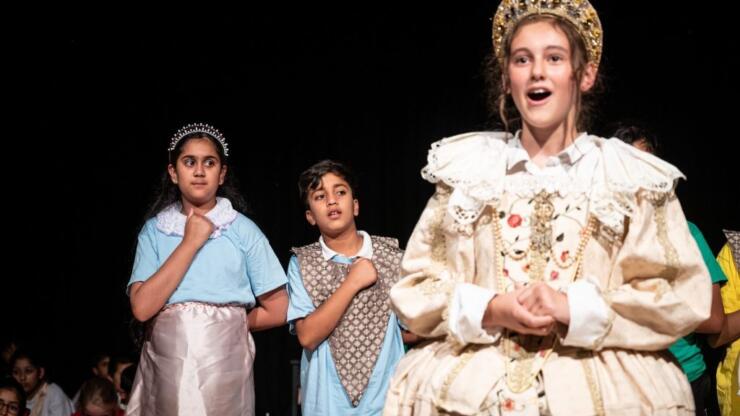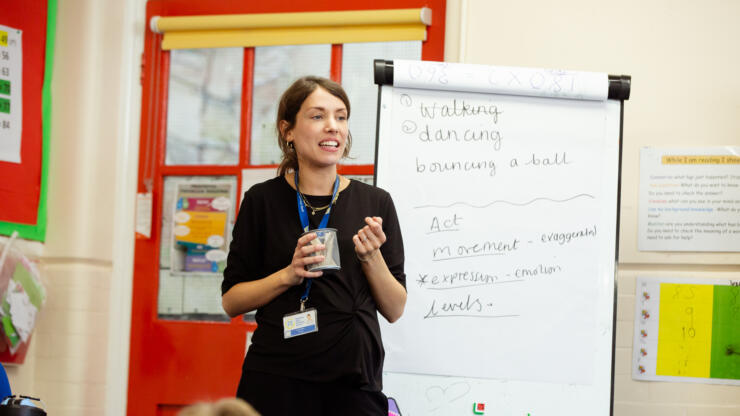Step It Up is a collaboration between YDance and schools from three areas of Scotland, Dundee, West Dunbartonshire and Glasgow. Alison Curran, headteacher of St Mary’s RC Primary in Dundee shares her experience of leading her school through the programme.
St Mary’s RC Primary was initially approached to be involved in this TDF programme as the local education officer knew of my passion for dance and my belief in its power to have a positive impact on children’s and adults’ lives. I knew instantly that for me and my school, this was an opportunity I wanted us all to be a part of. We were used to the kind of project where a dance instructor came into school to teach dance and we expected similar but Step It Up was so much more. Significantly, the focus was on teachers and it was an opportunity for our staff to work alongside artists to better understand how to teach the curriculum using dance as the medium for communication.
As a headteacher, I believe that when you commit to a project you need to ensure that you are fully invested and are able to support all those involved to succeed despite the inevitable challenges and barriers that will emerge along the way. This probably sounds obvious, but in a school, where there are so many competing priorities and daily challenges it can be a real struggle to keep all the plates spinning. If senior leaders are enthusiastic and show they are prepared to invest then it shows staff that the project is valued. You have to lead by example.
My first task was to identify teachers who I felt were confident, comfortable and willing to lead this project not only in their classes but also in wider professional development for the school. It was vital that the staff, including myself, were willing and able to fully participate and commit to the project by engaging in all the activities, attending meetings after school, liaising with the dance instructor, reflecting on learning and connecting with the project lead. Most crucially we all had to be open to new ways of teaching and committed to engaging fully over the course of the two years. In addition to supporting the teachers in the programme, there were also inevitable practical issues to manage.
It was important to identify a protected space where the project could take place without interruptions — very difficult in a school. We were fortunate that we had a great relationship with our church and were able to use the church hall. The unintended consequence was that the children left the school and both pupils and teachers could therefore fully commit to the sessions without distractions, focusing entirely on the dance experiences.
School days are very busy but making yourself available to speak with the staff, pupils and partners involved in the project is vital and shows that you care about their learning and value it. Staff and pupils wanted to showcase their learning not only with me but also the rest of the school so I felt it was important to provide opportunities for this not only with other classes but also with our families.
I was fortunate that I could attend the final PHF-led cohort meeting in London where we shared the journey of our project and the impact it had on our school with others in our round. For me, as a headteacher, it was a great opportunity to reflect on the project and the legacy it is leaving within our school. It also provided an opportunity to network and hear about the other projects within the TDF programme. This confirmed to me that regardless of the project, what was important as a leader was ensuring you were able to realise the full impact on your school community. Using the inclusivity of the arts you can reduce barriers to enable participation and progress for all learners.
When you take part in a project that is about upskilling teachers, you need to consider legacy from the start. I believe that you shouldn’t embark upon any project without considering how you can encourage, inspire and influence learning and teaching in the future. For us, revisiting our curriculum to ensure that dance could be a part of our everyday approach was key. This, combined with our team of positive influencers who are now sharing their expertise with all colleagues, means that the legacy of Step It Up is firmly embedded in our school for now and into the future.



